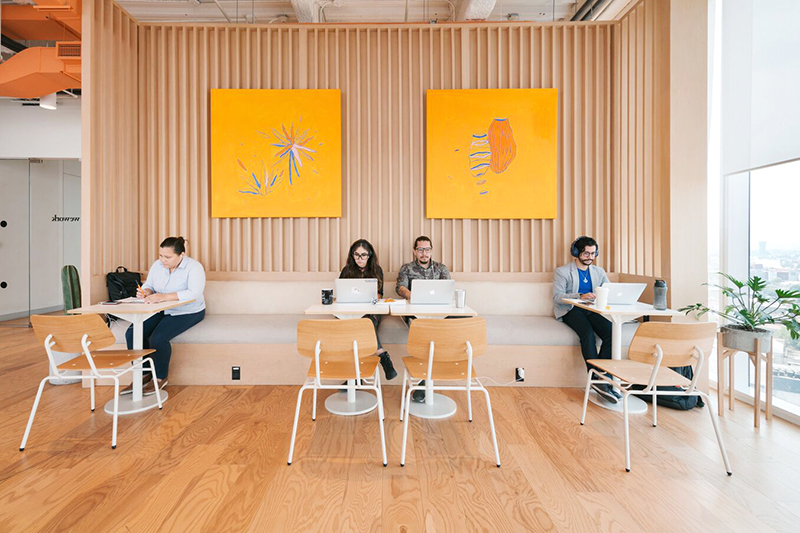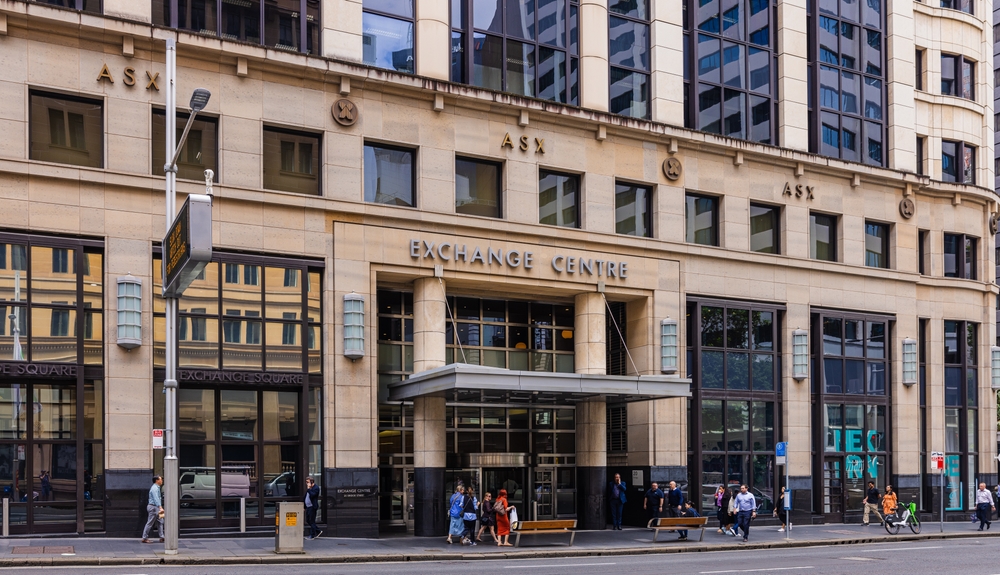Done Working From Home? Prepare for More Hot Desks
As employees return to the office, more of them will find that they no longer have an assigned workspace that’s all theirs.
Sarah Vanunu started a new job three weeks ago at MyHeritage, an online genealogy platform based in Or Yehuda, Israel, and thanks to Israel’s speedy vaccine rollout, she has been eligible for in-person work since she began. But she only goes in on Mondays and Wednesdays and leaves nothing on her assigned desk in between, since different people work there the other days of the week.
“It’s so funny to start a new job and not meet everyone up front,” she says. “I still don’t know half of my colleagues.”
MyHeritage, which employs about 400 people in Israel, is still operating at reduced capacity due to Covid restrictions. Ms. Vanunu, who directs the company’s public relations, comes to work with just a laptop and mouse. There’s a completely clean desk waiting for her there, with nothing on it but a monitor. If she wants to come in any other days, she must make a reservation online and get assigned to a random desk elsewhere.
As millions of workers head back to the office this summer, many will return without a desk of their own. Some appreciate the flexibility of these hot-desk arrangements, which aren’t completely new but have become vastly more popular as part of post-pandemic plans for hybrid work.
But hot desks also mean extra time spent managing reservations, coordinating with teams and helping employees feel a sense of belonging without a dedicated spot for them in the office. Experts and workers say there are ways to optimize these spaces, including assigning desks to groups instead of individuals, planning schedules, designating areas for socializing and being extra-mindful of workers with special needs or disabilities.
A major reason desk reservations are a big part of so many companies’ return to work is that most workers haven’t yet been ordered to come in five days a week, so their schedules remain variable. And many offices are reopening at lower than maximum capacity. JPMorgan Chase CEO Jamie Dimon wrote in his annual shareholder letter in April that the bank may need only 60 seats for every 100 employees after the pandemic.
“You have to have most employees coming in nearly every day to justify assigning them a desk,” says Amy Yin, San Francisco-based founder of OfficeTogether, an office reservation and scheduling software company.
Some companies also want to avoid assigning desks so they can clean them more frequently as part of enhanced pandemic-era hygiene protocols.
The key concept emerging around desk-reservation systems is “neighbourhoods,” where certain teams can gather a few days a week, as opposed to individual workers reserving their own desks and coming in willy-nilly.
MyHeritage, which opened for in-person work in April, designated one or two specific weekdays for each team, such as research and development or product, says the company’s facilities manager, Katerina Breitman.
The most popular day for in-person work at the moment is Thursday, according to data compiled in May from about 10,000 offices around the world by Robin, a workplace management platform. (The least popular is Friday.)
Flexible work arrangements are likely here to stay: In one 2020 survey of 77 firms worldwide by CBRE Research, 56% of those surveyed anticipated more use of flexible office space.
Social interaction may be one of the trickiest parts of these arrangements in the long run, since workers can no longer drop by the permanent desk of a colleague for unplanned chitchat. A 2018 survey by Workthere, a co-working space company, found that only 46% of workers surveyed felt that they were more productive in a hot-desk environment compared with having their own desk.
One workaround is to designate areas just for socializing. The Austin, Texas, office of the consulting firm Bain & Co., which reopened in May in a WeWork, has a “bullpen” area, an open space with larger tables that can seat about 25 people, to facilitate water-cooler moments, says Peter Bowen, a partner there.
Live feeds can also help workers keep track of each other, says Zach Dunn, Boston-based co-founder of Robin. “At the beginning of the year, [our software] basically showed desks and seat assignments, but now it’s a map updated in real-time as people move through the office.”
Over time, companies have gotten better at the extra layer of planning required to work in an office that accommodates fewer people in more locales. In Austin, Bain asks employees to indicate on a mobile app which days they plan to come in the following week. If many people plan to come on a particular day, they might allot the morning to a certain team and the afternoon to a different one.
OfficeTogether allows booking up to 30 days in advance, but Ms. Yin says most companies tend to book about two weeks out.
Workers with disabilities, as well as workers who are used to having specific accommodations at their workstations, may find it harder to adjust to hot-desking.
It’s important to design such offices so that they are accessible from the outset, says Deborah Foster, a professor at Cardiff Business School in Wales who studies diversity in the workplace. “Ensuring that the layout is wheelchair-accessible and putting sensory markers on floors to guide people with sight impairments are two considerations,” she says. Also important: proper lighting and ensuring that there are quiet spaces for workers who need to use assistive technologies like voice-recognition software.
For workers who can’t be accommodated in the short-term, employers should be more flexible about allowing them to continue working from home, Dr. Foster says.
One final thing that workers may miss with hot desks is the chance to spruce up their workspaces with personal memorabilia.
Mr. Bowen, at Bain, used to keep all kinds of tchotchkes at his old desk in Chicago: photos, a binder of 20 years’ worth of company presentations, a trophy from his company golf tournament. He will eventually go back there to retrieve his mementos, but no longer feels he needs to have them at his desk for colleagues to see. Instead, he’ll just store them at his new home in Texas.
“The rise of the home office has kind of created a second place for all that stuff,” he says.
Reprinted by permission of The Wall Street Journal, Copyright 2021 Dow Jones & Company. Inc. All Rights Reserved Worldwide. Original date of publication: June 12, 2021
 Copyright 2020, Dow Jones & Company, Inc. All Rights Reserved Worldwide. LEARN MORE
Copyright 2020, Dow Jones & Company, Inc. All Rights Reserved Worldwide. LEARN MORE
This stylish family home combines a classic palette and finishes with a flexible floorplan
Just 55 minutes from Sydney, make this your creative getaway located in the majestic Hawkesbury region.
Continued stagflation and cost of living pressures are causing couples to think twice about starting a family, new data has revealed, with long term impacts expected
Australia is in the midst of a ‘baby recession’ with preliminary estimates showing the number of births in 2023 fell by more than four percent to the lowest level since 2006, according to KPMG. The consultancy firm says this reflects the impact of cost-of-living pressures on the feasibility of younger Australians starting a family.
KPMG estimates that 289,100 babies were born in 2023. This compares to 300,684 babies in 2022 and 309,996 in 2021, according to the Australian Bureau of Statistics (ABS). KPMG urban economist Terry Rawnsley said weak economic growth often leads to a reduced number of births. In 2023, ABS data shows gross domestic product (GDP) fell to 1.5 percent. Despite the population growing by 2.5 percent in 2023, GDP on a per capita basis went into negative territory, down one percent over the 12 months.
“Birth rates provide insight into long-term population growth as well as the current confidence of Australian families,” said Mr Rawnsley. “We haven’t seen such a sharp drop in births in Australia since the period of economic stagflation in the 1970s, which coincided with the initial widespread adoption of the contraceptive pill.”
Mr Rawnsley said many Australian couples delayed starting a family while the pandemic played out in 2020. The number of births fell from 305,832 in 2019 to 294,369 in 2020. Then in 2021, strong employment and vast amounts of stimulus money, along with high household savings due to lockdowns, gave couples better financial means to have a baby. This led to a rebound in births.
However, the re-opening of the global economy in 2022 led to soaring inflation. By the start of 2023, the Australian consumer price index (CPI) had risen to its highest level since 1990 at 7.8 percent per annum. By that stage, the Reserve Bank had already commenced an aggressive rate-hiking strategy to fight inflation and had raised the cash rate every month between May and December 2022.
Five more rate hikes during 2023 put further pressure on couples with mortgages and put the brakes on family formation. “This combination of the pandemic and rapid economic changes explains the spike and subsequent sharp decline in birth rates we have observed over the past four years,” Mr Rawnsley said.
The impact of high costs of living on couples’ decision to have a baby is highlighted in births data for the capital cities. KPMG estimates there were 60,860 births in Sydney in 2023, down 8.6 percent from 2019. There were 56,270 births in Melbourne, down 7.3 percent. In Perth, there were 25,020 births, down 6 percent, while in Brisbane there were 30,250 births, down 4.3 percent. Canberra was the only capital city where there was no fall in the number of births in 2023 compared to 2019.
“CPI growth in Canberra has been slightly subdued compared to that in other major cities, and the economic outlook has remained strong,” Mr Rawnsley said. “This means families have not been hurting as much as those in other capital cities, and in turn, we’ve seen a stabilisation of births in the ACT.”
This stylish family home combines a classic palette and finishes with a flexible floorplan
Just 55 minutes from Sydney, make this your creative getaway located in the majestic Hawkesbury region.





















